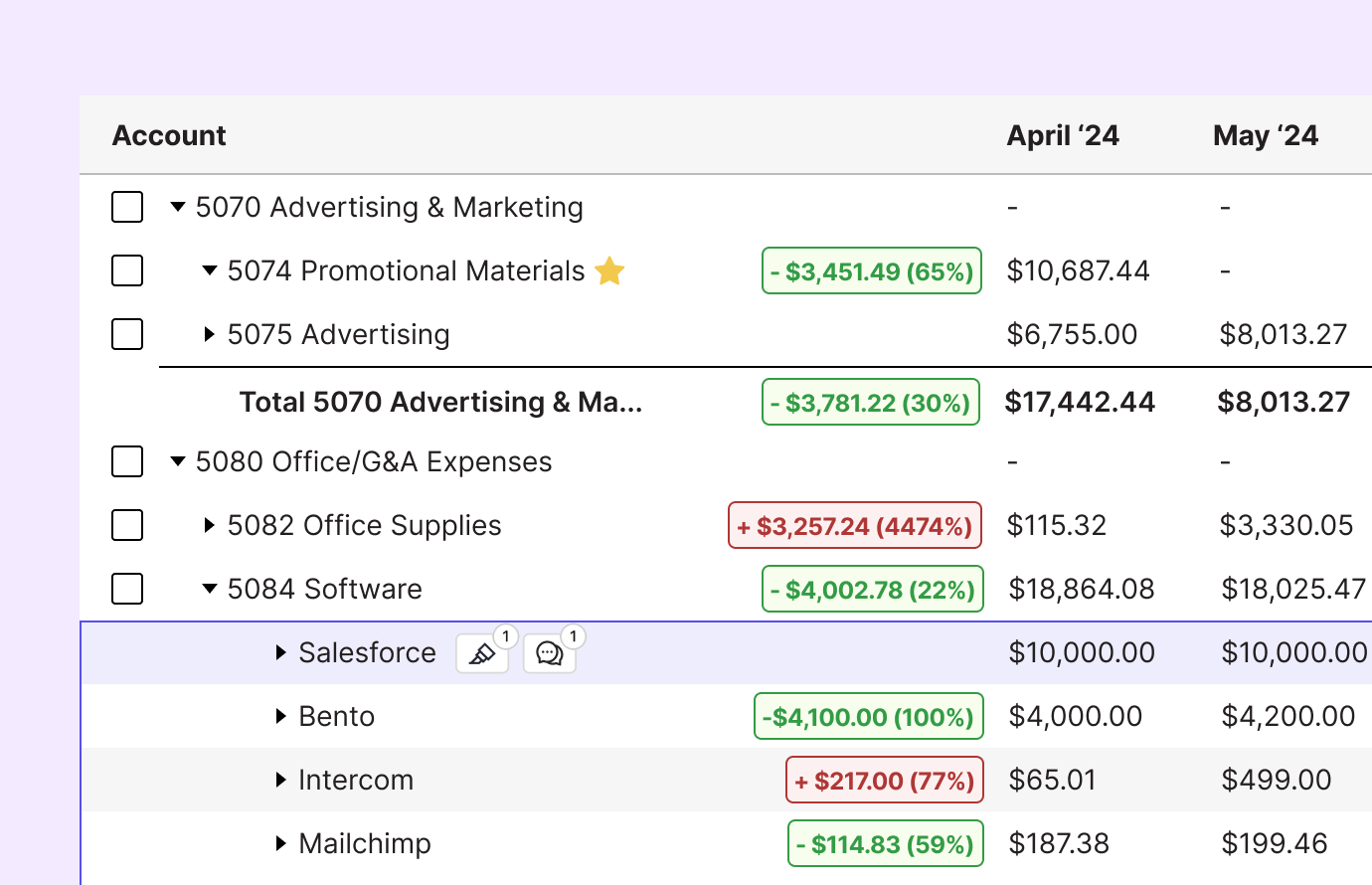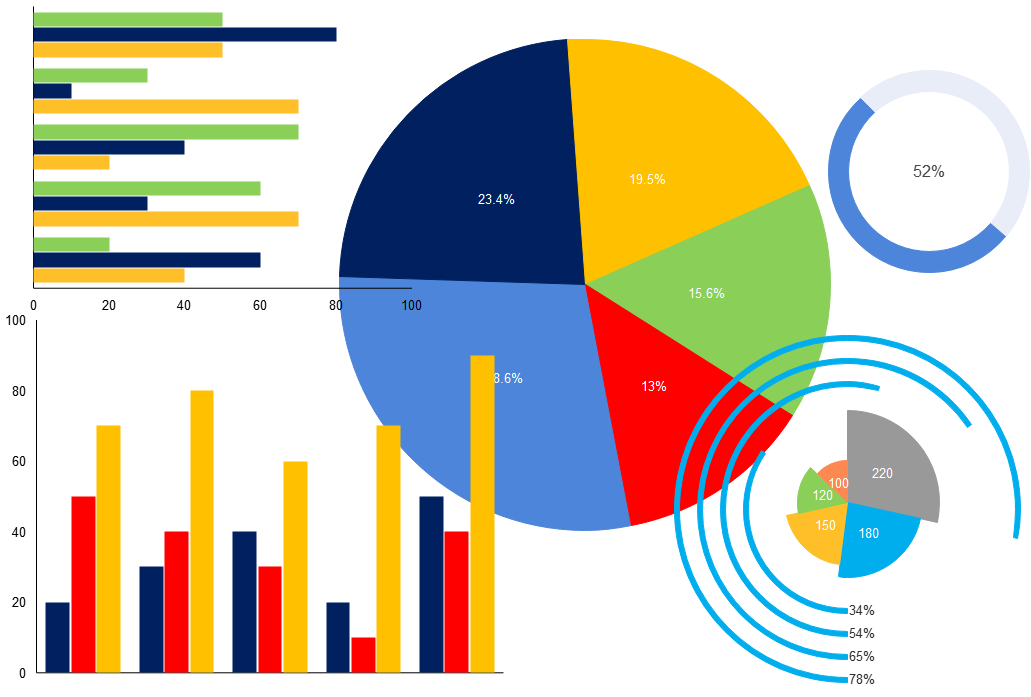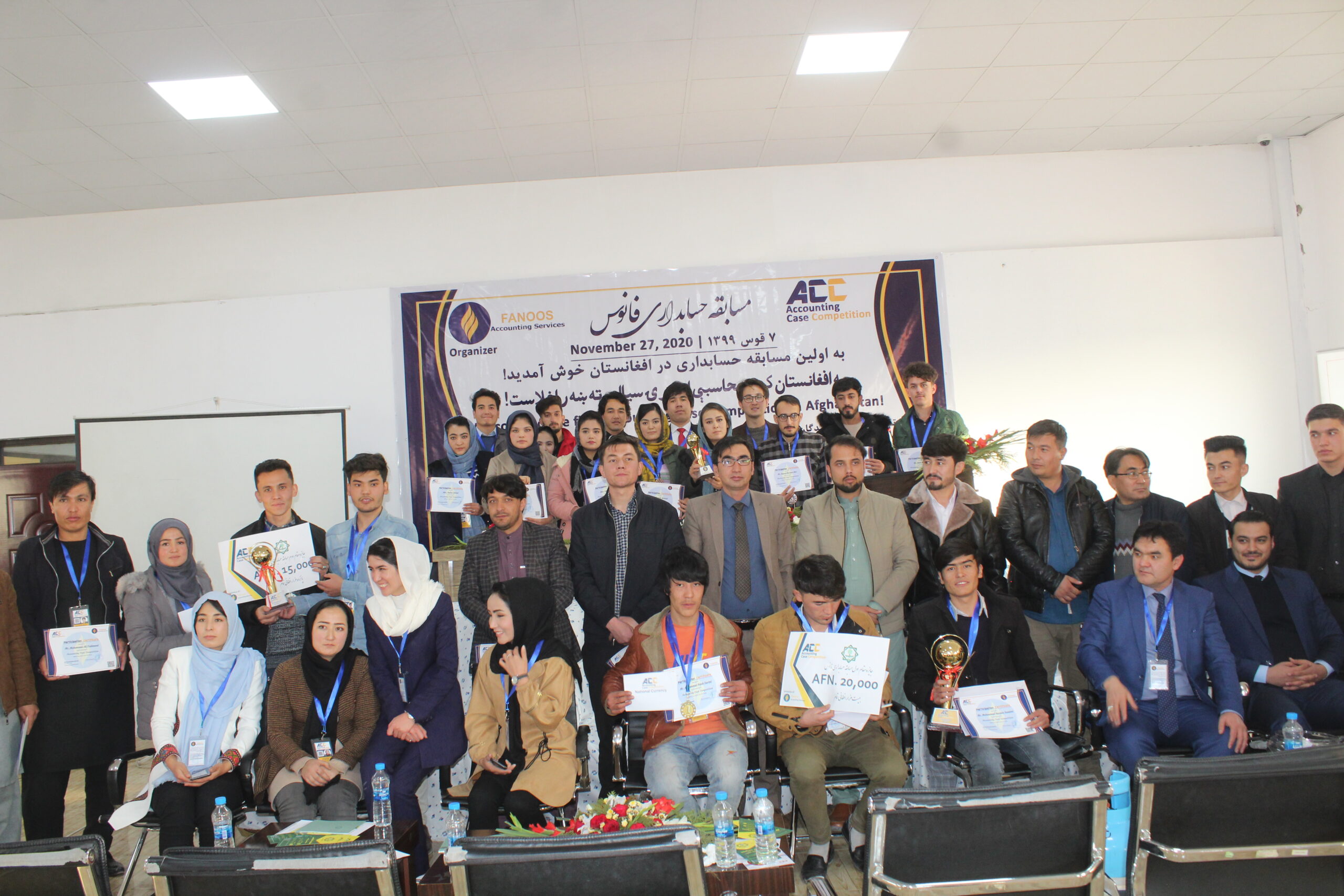درک اقتصاد: راهنمای جامع
مقدمهای بر اقتصاد
اقتصاد سیستمی است که از طریق آن منابع، کالاها و خدمات در یک جامعه تولید، توزیع و مصرف میشوند. اقتصاد ستون فقرات هر تمدنی است و بر کیفیت زندگی، فرصتهای شغلی و ثروت ملتها تأثیر میگذارد. درک اقتصاد به افراد، کسبوکارها و سیاستگذاران کمک میکند تا تصمیمات آگاهانهتری بگیرند و به تغییرات بهخوبی سازگار شوند.
اجزای کلیدی اقتصاد
- منابع اقتصادی
- زمین: منابع طبیعی مانند مواد معدنی، آب و جنگلها.
- کار: تلاش انسانی شامل فعالیتهای فیزیکی و فکری.
- سرمایه: ابزارها، ماشینآلات و فناوریهای مورد استفاده در تولید.
- کارآفرینی: توانایی نوآوری و مدیریت کسبوکارها.
- بخشهای اقتصادی
- بخش اولیه: شامل استخراج مواد خام (مانند کشاورزی و معدن).
- بخش ثانویه: تولیدات صنعتی و فرآوری.
- بخش ثالث: خدماتی مانند بهداشت، آموزش و خردهفروشی.
- بخش چهارم: خدمات مبتنی بر دانش و اطلاعات مانند فناوری اطلاعات و تحقیق.
- عوامل اقتصادی
- خانوارها: مصرفکنندگانی که تقاضای کالاها و خدمات دارند.
- شرکتها: تولیدکنندگانی که کالاها و خدمات عرضه میکنند.
- دولت: تنظیمکننده، مالیاتگیرنده و توزیعکننده منابع.
- عوامل بینالمللی: کشورها و سازمانهایی که در تجارت و جهانیسازی مشارکت دارند.
مفاهیم اصلی در اقتصاد
- عرضه و تقاضا
تعامل میان عرضه (مقداری که تولیدکنندگان مایل به فروش هستند) و تقاضا (مقداری که مصرفکنندگان مایل به خرید هستند) قیمتها و مقادیر را در بازار تعیین میکند.
- سیستمهای اقتصادی
- اقتصاد سرمایهداری: مبتنی بر بازار با حداقل مداخله دولت.
- اقتصاد سوسیالیستی: کنترل دولتی با تأکید بر برابری.
- اقتصاد مختلط: ترکیبی از سرمایهداری و سوسیالیسم.
- شاخصهای اقتصادی
- تولید ناخالص داخلی (GDP): ارزش کل کالاها و خدمات تولید شده.
- نرخ بیکاری: درصد افرادی که به دنبال کار هستند ولی نمیتوانند شغلی بیابند.
- نرخ تورم: سرعت افزایش قیمتها در طول زمان.
- تراز تجاری: تفاوت میان صادرات و واردات.
چگونه اقتصاد بر زندگی روزمره تأثیر میگذارد؟
- فرصتهای شغلی
اقتصاد قوی اشتغال ایجاد میکند و بیکاری را کاهش میدهد. در مقابل، رکود اقتصادی منجر به از دست رفتن شغلها میشود.
- هزینه زندگی
تورم و نرخ بهره بر قدرت خرید افراد و خانوادهها تأثیر میگذارد.
- دسترسی به خدمات
رشد اقتصادی امکان دسترسی بهتر به خدماتی مانند بهداشت، آموزش و زیرساختها را فراهم میکند.
- سرمایهگذاری و پسانداز
درک اقتصاد به افراد کمک میکند تا تصمیمات آگاهانهای در مورد پسانداز، سرمایهگذاری و وام بگیرند.
جهانیسازی و اقتصاد
- تجارت: کشورها کالاها و خدمات را مبادله میکنند که منجر به تخصص و بهرهوری میشود.
- فناوری: پیشرفتهایی مانند هوش مصنوعی و خودکارسازی، رشد اقتصادی و نوآوری را تسریع میکند.
- بحرانهای جهانی: رویدادهایی مانند پاندمیها و جنگها میتوانند ثبات اقتصادی را مختل کنند و نیاز به تابآوری را برجسته سازند.
درک سیاستهای اقتصادی
- سیاست مالی
دولتها از مالیاتگیری و هزینهکرد برای تأثیرگذاری بر اقتصاد استفاده میکنند. برای مثال، افزایش هزینههای عمومی در زمان رکود باعث تقویت تقاضا میشود.
- سیاست پولی
بانکهای مرکزی با تنظیم عرضه پول و نرخ بهره تورم را کنترل و ارز را تثبیت میکنند.
- سیاستهای تنظیمی
قوانین و مقررات برای تضمین رقابت منصفانه و جلوگیری از ناکامیهای بازار اجرا میشوند.
گامهای عملی برای درک بهتر اقتصاد
- مطلع بمانید
از منابع معتبر مانند اخبار مالی، گزارشها و انتشارات دولتی استفاده کنید.
- اقتصاد پایه را یاد بگیرید
با اصطلاحات و اصول اقتصادی از طریق کتابها و دورهها آشنا شوید.
- تحلیل روندها
شاخصهای اقتصادی را مشاهده کرده و تأثیر آنها بر بازار را درک کنید.
- مشارکت در بحثها
در انجمنها و سمینارها شرکت کنید تا دیدگاههای متنوعی کسب کنید.
- تفکر انتقادی داشته باشید
بررسی کنید که چگونه سیاستها، فناوریها و رویدادهای جهانی بر اقتصاد تأثیر میگذارند.
نتیجهگیری
درک اقتصاد افراد را قادر میسازد تا پیچیدگی های آن را مدیریت کنند، تغییرات را پیشبینی کرده و از فرصتها بهره ببرند. چه دانشجو، چه کار آفرین یا سیاستگذاری باشید، سواد اقتصادی یک مهارت حیاتی در دنیای بهم پیوسته امروز است.
د اقتصاد پوهیدنه: یو بشپړ لارښود
اقتصاد ته لنډه کتنه
اقتصاد هغه نظام دی چې د ټولنې دننه سرچینې، توکي او خدمات تولید، وېشل او مصرف کېږي. اقتصاد د هرې ټولنې بنسټ دی، چې د خلکو د ژوند پر کیفیت، کاري فرصتونو او د ملتونو پر شتمنۍ اغېزه کوي. د اقتصاد پوهیدنه خلکو، سوداګرو او پالیسي جوړوونکو ته مرسته ورکوي ترڅو د غوره پریکړو لپاره چمتو شي او له بدلونونو سره ځانونه برابر کړي.
د اقتصاد اساسي برخې
اقتصادي سرچینې
ځمکه: طبیعي منابع لکه معدنونه، اوبه او ځنګلونه.
کار: د انسان فزیکي او فکري هڅې.
سرمایه: هغه وسایل، ماشینونه او ټکنالوژي چې د تولید لپاره کارول کېږي.
کارآفریني: د نوښت او د سوداګرۍ د مدیریت وړتیا.
اقتصادي سکتورونه
لومړنی سکتور: د خامو موادو استخراج (لکه کرنه او کانونه).
دوهم سکتور: د صنعت او تولید برخه.
دریم سکتور: خدمات لکه روغتیا، زدهکړه او پرچون.
څلورم سکتور: د معلوماتو او پوهې پر بنسټ خدمات لکه ټکنالوژي او څېړنه.
اقتصادي عاملین
کورنۍ: هغه مصرفوونکي چې د توکو او خدماتو غوښتنه کوي.
شرکتونه: تولیدوونکي چې توکي او خدمات عرضه کوي.
حکومت: تنظیموونکی، مالیه اخیستونکی او د سرچینو وېشونکی.
نړیوال فاعلین: هغه هیوادونه او سازمانونه چې په سوداګرۍ او نړیوال کېښنا کې برخه اخلي.
د اقتصاد اصلي مفاهیم
عرضه او تقاضا
د عرضه (هغه څه چې تولیدونکي یې پلورل غواړي) او تقاضا (هغه څه چې مصرفوونکي یې اخیستل غواړي) تر منځ تعامل د بازار قیمتونه او مقدارونه ټاکي.
اقتصادي نظامونه
پانګوالي اقتصاد: د بازار پر بنسټ او د حکومت لږه مداخله.
سوسیالستي اقتصاد: د دولت تر کنټرول لاندې او د برابرۍ پر بنسټ.
مخلوط اقتصاد: د پانګوالي او سوسیالیزم ترکیب.
اقتصادي شاخصونه
د ناخالص کورني تولید (GDP): د تولید شویو توکو او خدماتو ټولیز ارزښت.
د بیکارۍ کچه: هغه خلکو سلنه چې د کار په لټه کې دي خو کار نه شي موندلی.
د انفلاسیون کچه: د توکو د بیو د زیاتوالي اندازه په ټاکلې موده کې.
د سوداګرۍ توازن: د صادراتو او وارداتو تر منځ توپیر.
اقتصاد څنګه په ورځني ژوند کې اغېزه کوي؟
کاري فرصتونه
قوي اقتصاد د کار زمینې برابرې کوي او بیکاري کموي. په مقابل کې، د اقتصادي رکود له امله خلک خپلې دندې له لاسه ورکوي.
د ژوند لګښتونه
انفلاسیون او د سود کچه د خلکو د پېرودلو ځواک اغېزمن کوي.
خدماتو ته لاسرسی
اقتصادي وده د روغتیا، زدهکړې او بنسټیزو خدماتو ته ښه لاسرسی برابروي.
سرمایهګذاري او سپما
د اقتصاد پوهیدنه خلکو ته اجازه ورکوي چې د سپما، سرمایهګذارۍ او پورونو په اړه سمې پرېکړې وکړي.
نړیوال کېدل او اقتصاد
سوداګري: هیوادونه توکي او خدمات تبادله کوي چې تخصص او موثریت رامنځته کوي.
ټکنالوژي: پرمختګونه لکه مصنوعي هوښ او اتومات کول اقتصادي وده او نوښت چټکوي.
نړیوال بحرانونه: لکه وباګانې او جګړې چې اقتصادي ثبات ګډوډوي او د مقاومت اړتیا ته وده ورکوي.
د اقتصادي سیاستونو پوهیدنه
مالیاتي سیاست
حکومتونه د مالیاتو اخیستلو او لګښتونو له لارې پر اقتصاد اغېزه کوي. د بیلګې په توګه، په رکود کې د حکومت لګښتونو زیاتوالی د تقاضا په پیاوړتیا کې مرسته کوي.
پولي سیاست
مرکزي بانکونه د پیسو عرضه او د سود کچه تنظیموي ترڅو انفلاسیون کنټرول کړي او د اسعارو ثبات یقیني کړي.
تنظیماتي سیاستونه
قوانین او مقررات د منصفانه سیالۍ یقیني کولو او د بازار د ناکامۍ مخنیوي لپاره پلي کېږي.
د اقتصاد د ښه پوهیدو لپاره عملي ګامونه
خبر پاتې شئ
د باوري سرچینو لکه مالي خبرونه، راپورونه او حکومتي خپرونو څخه ګټه واخلئ.
د اقتصاد بنسټونه زده کړئ
د کتابونو او کورسونو له لارې د اقتصادي اصطلاحاتو او اصولو سره بلدتیا پیدا کړئ.
د رجحاناتو تحلیل
د اقتصادي شاخصونو څارنه وکړئ او د بازار پر اغېز یې پوه شئ.
په بحثونو کې ګډون وکړئ
په فورمونو او سیمینارونو کې ګډون وکړئ ترڅو مختلفې نظریې واورئ.
انتقادي فکر وکړئ
وګورئ چې سیاستونه، ټکنالوژي او نړیوالې پېښې څنګه پر اقتصاد اغېزه کوي.
پایله
د اقتصاد پوهیدنه خلک دې ته چمتو کوي چې د دې پېچلتیاوې درک کړي، بدلونونه اټکل کړي او له فرصتونو ګټه واخلي. که تاسو زدهکوونکی، کارآفرین یا سیاست جوړوونکی یاست، د اقتصاد پوهاوی په نننۍ اړیکمنې نړۍ کې یوه حیاتي مهارت ده.
Understanding the Economy: A Comprehensive Guide
Introduction to the Economy
The economy is the system through which resources, goods, and services are produced, distributed, and consumed in a society. It is the backbone of any civilization, influencing the quality of life, employment opportunities, and the wealth of nations. Understanding the economy helps individuals, businesses, and policymakers make informed decisions and adapt to changes effectively.
Key Components of the Economy
Economic Resources
- Land: Natural resources like minerals, water, and forests.
- Labor: Human effort, including physical and intellectual contributions.
- Capital: Tools, machinery, and technology used for production.
- Entrepreneurship: The ability to innovate and manage businesses.
- Economic Sectors
- Primary Sector: Involves raw material extraction (e.g., agriculture, mining).
- Secondary Sector: Manufacturing and industrial production.
- Tertiary Sector: Services such as healthcare, education, and retail.
- Quaternary Sector: Knowledge and information-based services like IT and research.
- Economic Agents
- Households: Consumers who demand goods and services.
- Firms: Producers that supply goods and services.
- Government: Regulates, taxes, and redistributes resources.
- International Actors: Countries and organizations involved in trade and globalization.
Core Concepts in Economics
Supply and Demand
The interaction between supply (what producers are willing to sell) and demand (what consumers are willing to buy) determines prices and quantities in markets.
Economic Systems
- Capitalist Economy: Market-driven with minimal government intervention.
- Socialist Economy: State-controlled with an emphasis on equality.
- Mixed Economy: Combines elements of capitalism and socialism.
Economic Indicators
- Gross Domestic Product (GDP): Total value of goods and services produced.
- Unemployment Rate: Percentage of people actively seeking work but unable to find it.
- Inflation Rate: Rate at which prices increase over time.
- Balance of Trade: Difference between exports and imports.
How the Economy Affects Daily Life
Employment Opportunities
A strong economy creates jobs and reduces unemployment. Conversely, economic downturns lead to job losses.
Cost of Living
Inflation and interest rates affect the purchasing power of individuals and families.
Access to Services
Economic growth enables better access to healthcare, education, and infrastructure.
Investment and Savings
Understanding the economy helps individuals make informed decisions about savings, investments, and loans.
Globalization and the Economy
- Trade: Countries exchange goods and services, leading to specialization and efficiency.
- Technology: Advances like AI and automation drive economic growth and innovation.
- Global Crises: Events like pandemics and wars can disrupt economic stability, emphasizing the need for resilience.
Understanding Economic Policies
Fiscal Policy
Governments use taxation and spending to influence the economy. For example, increasing public spending during a recession boosts demand.
Monetary Policy
Central banks regulate money supply and interest rates to control inflation and stabilize the currency.
Regulatory Policies
Rules and regulations ensure fair competition and prevent market failures.
Practical Steps to Understand the Economy Better
Stay Informed
Read credible sources like financial news, reports, and government publications.
Learn Basic Economics
Familiarize yourself with economic terms and principles through books and courses.
Analyze Trends
Observe economic indicators and understand how they impact the market.
Engage in Discussions
Participate in forums and seminars to gain diverse perspectives.
Think Critically
Question how policies, technologies, and global events influence the economy.
Conclusion
Understanding the economy equips individuals to navigate its complexities, anticipate changes, and capitalize on opportunities. Whether you are a student, entrepreneur, or policymaker, economic literacy is a vital skill in today’s interconnected world.










